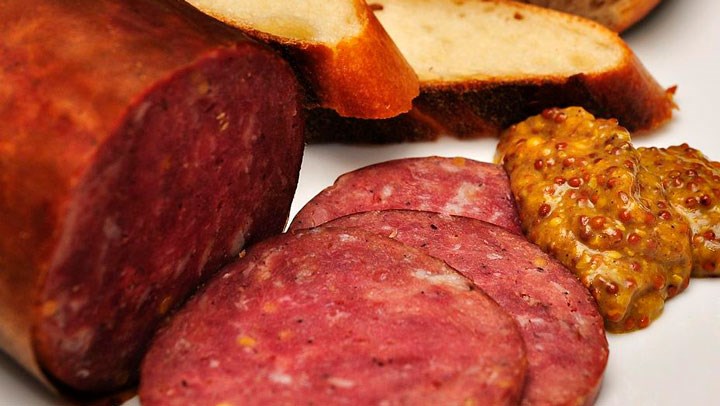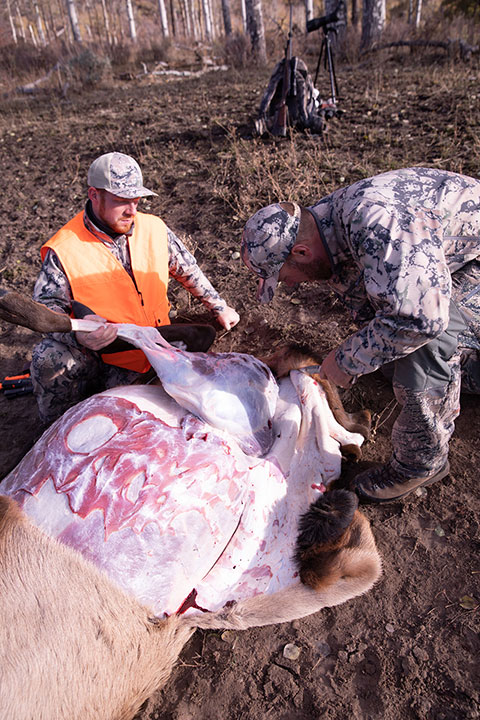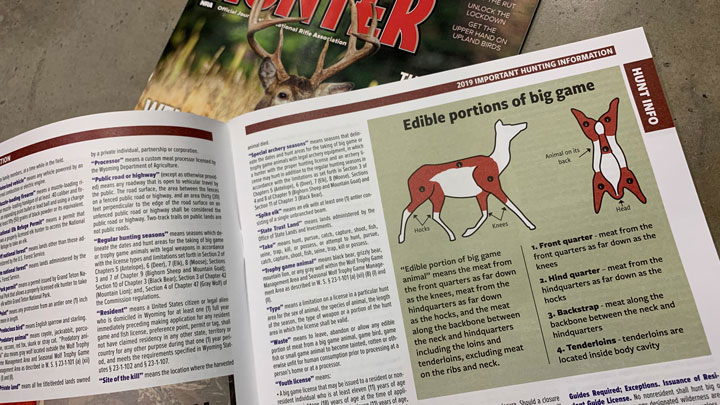
by Darron McDougal - Thursday, March 12, 2020

I not only love to eat venison, but I rely on it. For years, the only grocery-store meat my wife and I have occasionally purchased is chicken. From tacos to spaghetti to you name it, we annually consume heaps of venison. This all came about for two reasons. First, I absolutely love to hunt and believe it is my responsibility to consume what I hunt and shoot (except for pests like skunks or predators like coyotes). Second, I disagree with the meat industry’s animal treatment and meat handling.
In the McDougal home, taking a deer or elk is a much-celebrated event. While I certainly do my best to harvest mature animals and value the antlers, the meat means so much more. That’s why I treat every harvest sacredly and handle the meat quickly and carefully. Antlers will remain intact and we can continue admiring them for years and years, but meat is a time-sensitive reward.
This brings us to a question: When you’re fortunate enough to harvest game, how much meat should you take from the animal? Let’s discuss the ethics that govern this matter.
Follow the Laws

The best place to begin sorting out this question is referring to your state’s hunting regulations. Many states maintain laws that very clearly prohibit the wasting of wild game meat. Wyoming is one of them.
“Regarding big game, the minimum amount of meat hunters must harvest is denoted as ‘edible portions,’” Sara DiRienzo of the Wyoming Game & Fish Department said. “This means the meat from the front quarters down to the knees, meat from the hindquarters down to the hocks, and the meat along the backbone between the neck and hindquarters, including the loins and tenderloins. Meat on the ribs and neck is excluded.
“There are also rules about waste, which means to leave, abandon or allow any edible portion of meat from a big game animal, game bird, game fish or small game animal to become tainted, rotten or otherwise unfit for human consumption prior to processing at a person’s home or at a processor,” DiRienzo continued. “These laws are meant to prevent waste based on the guiding tenants of the North American Model for Wildlife Management, of which fish and wildlife agencies were built upon. One of the main tenants of the model is to restrict frivolous hunting, and that includes strict guidelines for the meat.”
Greg Wooten of the Idaho Fish and Game Department shared similar statements.
“Idaho law prevents waste of wildlife,” he said. “It’s important that we help people understand what edible portions are and what is required by law to recover. I personally don’t want people wondering if they’ve taken enough or feeling guilty for leaving too much. Our code is very specific, removing doubt and confusion, as to what they legally must dress and care for. Then, they can make their own decisions on additional portions they chose to recover and consume. The most commonly consumed internal organs are the heart and liver.”

Besides going above and beyond by harvesting as much meat as possible, there are other measures you can take to ensure you get more and better-tasting meat from your kills.
“Hunters can increase their yield by making better shots and keeping the carcass clean,” DiRienzo shared. “For today's hunter, there are more resources than ever before to help hunters create delicious recipes from the meat they harvest, including consuming other parts, such as the heart,” DiRienzo shared.
In other words, the more you harvest from your kill, the more culinary experimentation you get to do, which could lead to favorite new wild game dishes.
Heritage
Besides maximizing our use of the resource, Wooten noted that harvesting wild game meat is part of our human heritage.
“Utilization of edible meat from harvested game animals is tied to historical, subsistence-oriented hunter-gatherer survival,” he said. “This generation seems very interested in healthy food and healthy eating. In my opinion, wild meat is one of the healthiest forms of protein. Now, not all individuals define edible meat the same way. Some don’t consider internal organs—heart, liver, kidney, brain, tongue—edible, although some do.”
Epilogue
There you have it. Wasting is unlawful and detracts from our reputation as hunters. I’d suggest that you go above and beyond the minimum requirement and harvest as much meat as possible from every animal you’re fortunate enough to harvest. I don’t expect you to eat liver or eyeballs. Still, do your best to pick that carcass clean of all muscles. Not only does doing so come with the satisfaction of a job well done, but you also get the reward of meat that didn’t come from some questionable commercial source. What’s not to love about that?
The NRA Hunters' Leadership Forum website covers news relevant to hunters on the local, national and international fronts. We track how hunters' dollars are spent and we celebrate our long and rich hunting tradition, exposing those who seek to destroy it. Follow NRAHLF.org on Twitter @HuntersLead.
About the Author
Darron McDougal is a full-time freelance outdoor writer and editor who lives in Antigo, Wisc., with his bride, Becca. He's hunted in 12 states and successfully taken elk, bear, hogs, turkeys, pronghorn, whitetails and mule deer, most with archery equipment on DIY hunts. The McDougals enjoy all things hunting and shooting. They believe in God and love to travel.
E-mail your comments/questions about this site to:
[email protected]
